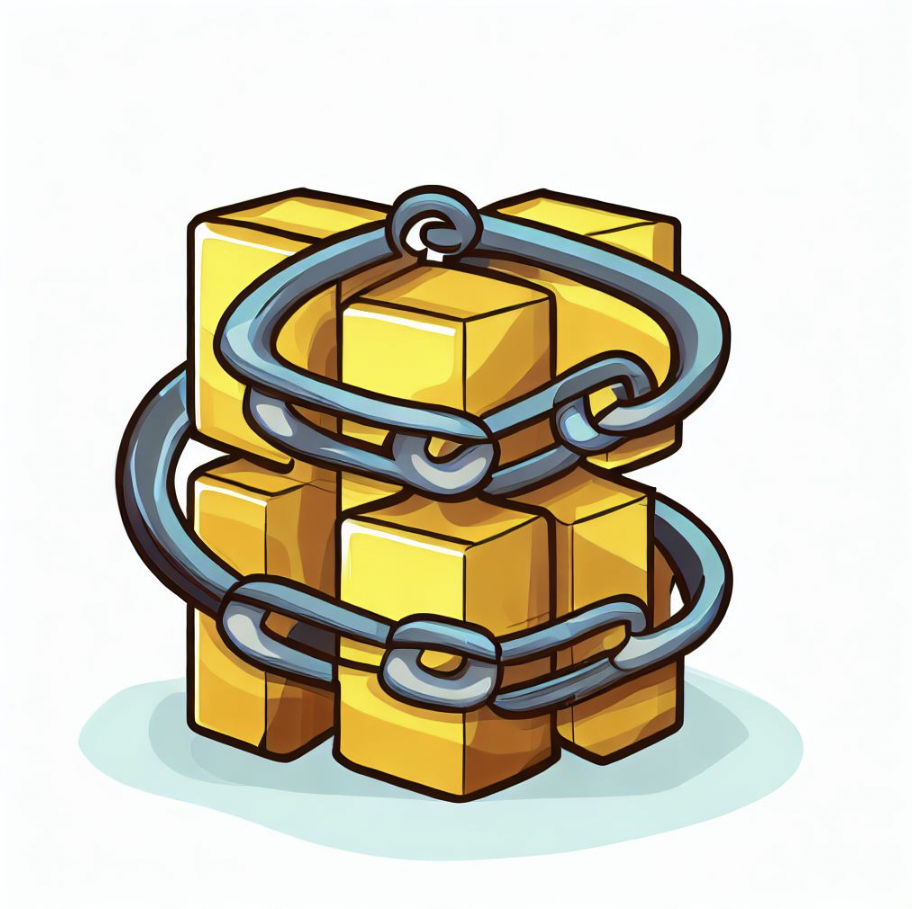In the digital age, the quest for secure and transparent transactions has led to the emergence of blockchain technology.
Initially conceived as the underlying structure for cryptocurrencies like Bitcoin, blockchain has evolved to find applications in various sectors including finance, healthcare, and real estate.
What Is Blockchain?
Blockchain is a decentralized and secure digital ledger technology that facilitates transparent, immutable, and efficient transactions across various sectors including finance, healthcare, and supply chain management.
Below we look more deeply into blockchain technology, exploring its origins, functionalities, and potential impacts on the modern world.
Table of Contents
Understanding the Basics
Definition
Blockchain is a decentralized ledger technology that records transactions across a network of computers in a way that ensures the security, transparency, and immutability of the data.
Each record in the blockchain is called a “block”, and multiple blocks are linked together in a chronological order to form a “chain”.
This chain of blocks is accessible by all participants in the network, fostering transparency and collaboration.
How It Works
At its core, a blockchain operates through a peer-to-peer network where transactions are verified by network nodes through cryptography.
Once verified, these transactions are added to the blockchain as a new block.
This process is decentralized, meaning that no single entity has control over the entire blockchain, and all transactions are transparent and verifiable by all users.
Creating a Block
A block contains a list of transactions, a reference to the previous block (through a cryptographic hash), and a unique identifier known as a hash.
When a block is created, it undergoes a verification process where network nodes validate the transactions contained within the block.
Adding to the Chain
Once verified, the block is added to the chain in a linear and chronological order.
This chain forms the blockchain, where each block is interconnected with the previous and subsequent blocks, creating a secure and immutable record of transactions.
Applications of Blockchain
Blockchain technology has transcended its initial purpose as the backbone of cryptocurrencies and has found applications in various fields.
Finance
In the financial sector, blockchain facilitates secure and transparent transactions, reducing the risk of fraud and eliminating the need for intermediaries.
It has also paved the way for innovations like smart contracts, which automatically execute contractual agreements when predetermined conditions are met.
Healthcare
In healthcare, blockchain can be utilized to create secure and immutable records of patient data, enhancing data security and facilitating better coordination among healthcare providers.
Supply Chain Management
Blockchain can revolutionize supply chain management by providing a transparent and unalterable record of product movements, from manufacturer to retailer.
This transparency can help in reducing fraud, improving efficiency, and ensuring the authenticity of products.

FAQs – What Is Blockchain?
What is blockchain technology?
Blockchain is a type of digital ledger technology where data is stored in “blocks” and then linked or “chained” together in a sequential manner.
This creates a secure and immutable record of transactions, which is decentralized and transparent.
How does a blockchain work?
Creation of Blocks
Each block in a blockchain contains a list of transactions.
Once a block is filled with transactions, it is added to the chain in a linear, chronological order.
Decentralization
Blockchain operates on a decentralized network of computers, meaning that no single entity has control over the entire blockchain, and all transactions are transparent and verifiable by all users.
Security
Blockchain utilizes cryptographic hashing and digital signatures to secure the data and ensure that once a transaction is added to the blockchain, it cannot be altered or deleted.
What are the applications of blockchain technology?
Cryptocurrency
Blockchain is the underlying technology behind cryptocurrencies like Bitcoin and Ethereum, facilitating secure and transparent peer-to-peer transactions.
Smart Contracts
Smart contracts are self-executing contracts with the terms directly written into code.
They automatically execute when the conditions in the agreement are met, reducing the risk of fraud and the need for intermediaries.
Supply Chain Management
Blockchain can enhance transparency and traceability in supply chain management, allowing companies to verify the authenticity of the products and track them from manufacturing to delivery.
What are the advantages of using blockchain technology?
Security
Blockchain offers enhanced security compared to traditional systems, as it is virtually tamper-proof due to its decentralized nature and cryptographic protection.
Transparency
All transactions on a blockchain are transparent and can be viewed by all participants, fostering trust and collaboration.
Efficiency
Blockchain eliminates the need for intermediaries, resulting in faster and more cost-effective transactions.
What are the potential drawbacks of blockchain technology?
Scalability
As the size of the blockchain increases, it requires more storage space and computational power, potentially leading to scalability issues.
Energy Consumption
Particularly in the case of cryptocurrencies like Bitcoin, the blockchain can consume a significant amount of energy due to the mining process, raising environmental concerns.
Regulatory and Security Issues
While blockchain is secure, it is not entirely immune to attacks.
Moreover, the regulatory landscape for blockchain is still evolving, which can pose challenges.
How can one get started with blockchain technology?
Education
Start by educating yourself through online courses, workshops, and seminars to understand the fundamentals of blockchain technology.
Practical Experience
Gain practical experience by working on blockchain projects, participating in hackathons, or contributing to open-source blockchain platforms.
Networking
Join blockchain communities and forums to connect with like-minded individuals and professionals in the field to learn and grow together.
Conclusion
Blockchain technology stands as a beacon of transparency, security, and efficiency in the digital age.
Its decentralized nature fosters collaboration and trust among participants in various sectors.
As blockchain evolves, it holds the promise of revolutionizing industries by fostering transparency, reducing fraud, and enhancing efficiency.
Its potential applications are vast.
By understanding the fundamentals of blockchain, we can better appreciate its potential to reshape the modern world, fostering a future where transactions are more secure, transparent, and efficient.


